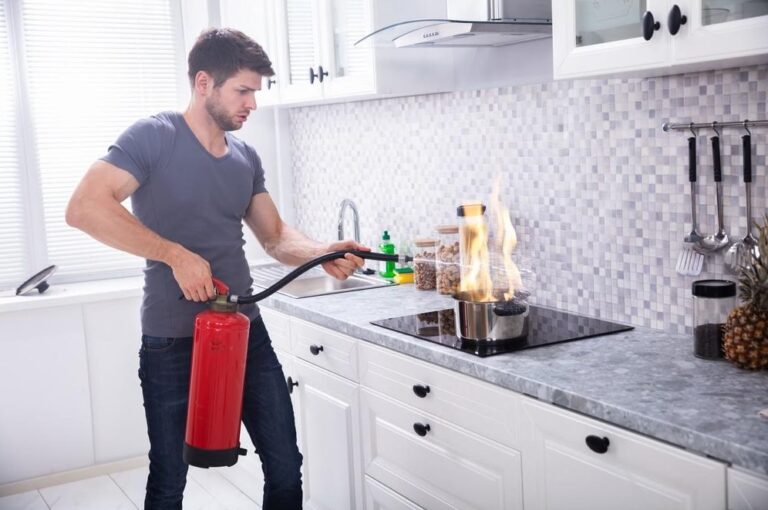The kitchen is supposed to be a place where positive things happen. It is where good food is cooked and family memories are made. But every now and again, the kitchen can be a place of tragedy. All it takes is the right combination of fuel and heat to start a fire that can quickly spiral out of control.
Unfortunately, most residential structure fires begin in the kitchen. According to the National Fire Protection Association (NFPA) 49% of all residential fires are the result of cooking. Furthermore, cooking-related fires are the leading cause of residential fire injuries and the second leading cause of residential fire deaths.
It goes without saying that it pays to be careful in the kitchen. To that end, the remainder of this post is dedicated to seven fire safety tips relating to the kitchen and cooking. They were briefly discussed in a recent Vivint Smart Home blog about smart smoke detectors.
1. Keep a Fire Extinguisher Handy
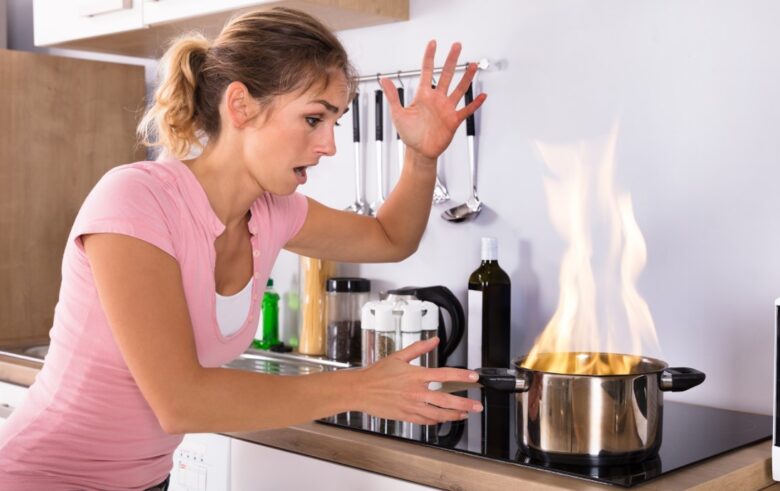
A fire extinguisher represents your best chances of putting out a fire that starts in the kitchen. Therefore, it is important that you buy one and know how to use it. Keep it stored in a location that offers easy access in the event of a fire.
Note that U.S. standards classify different types of fires based on the fuel they consume. In the kitchen, most cooking fires are linked to hot oil and grease. Neither oil nor grease is water-soluble, so a fire extinguisher intended for solid combustibles isn’t going to work. You need a fire extinguisher rated for flammable liquids. Keep this in mind when you shop for fire extinguishers.
2. Never Throw Water on a Grease Fire
Speaking of oil and grease fires, never try to extinguish one by pouring water on it. Again, oil and grease are not water-soluble. Therefore, water will not put out a grease fire. It will only spread the fire across the surface in question. This suggests that throwing water on a grease fire is the most dangerous thing you can do.
If you do not have a fire extinguisher, try to smother the flames instead. Use the lid from a pot or pan. Grab a large towel or blanket and throw it over the flames. If you have baking soda within reach, it is rather effective at smothering small fires.
3. Don’t Leave Pots and Pans Unattended
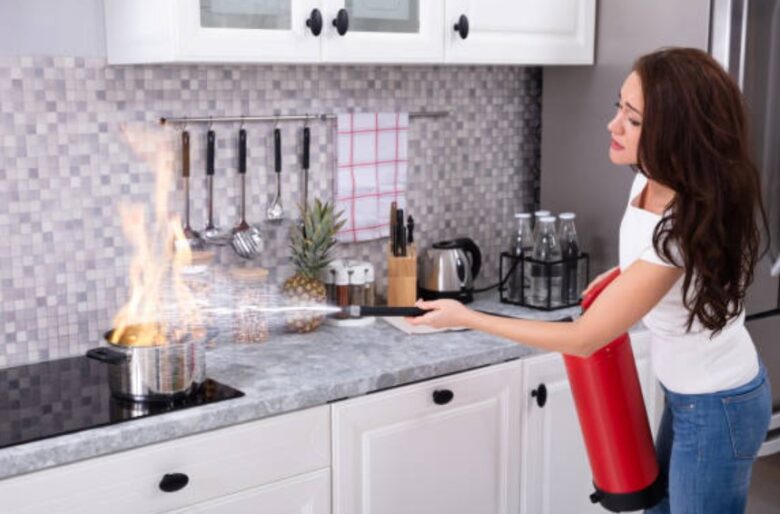
Pots and pans loaded with oils, fats, and greasy foods can easily spark a fire. Therefore, never leave pots and pans unattended. Do not get your food cooking and then walk away to do something else. If you absolutely must leave the room, take your pots and pans off the stove first. It may be more work, but better safe than sorry.
4. Be Careful with Flammable Materials
One of the reasons residential fires spread so quickly is the prevalence of flammable items in the typical American home. In the kitchen, flammable materials abound. You have paper towels and napkins. You have cooking oils and sprays. The list goes on and on. Be careful with all such materials.
Ideally, you want to keep all flammable materials away from your stove and oven. When using plugin devices like electric griddles and fryers, clear away any materials that could ignite. Give yourself plenty of room to work without those materials nearby.
5. Utilize Splatter Screens
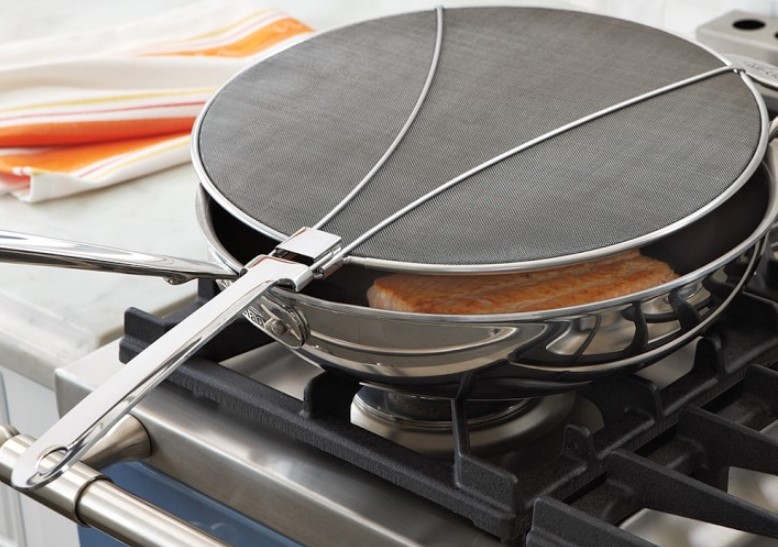
Some kitchen fires are started by grease splatters. Maybe you are cooking bacon or deep-frying chicken when a splatter leaves the pan and touches the hot stove. You can avoid this sort of thing by utilizing splatter screens. A splatter screen is a thin metal object that sits on top of a pot or pan. Steam can pass through the screen, but grease cannot.
6. Turn Off Your Appliances
Your stove and oven are meant to be used as tools for cooking. They should not be used as heating devices. Always turn them off when not in use. Not only will doing so reduce the risk of a residential structure fire, but you will also minimize the chances of accidentally burning yourself.
Under no circumstances should you use your stove or oven to heat your home. Doing so only increases your fire risks. It can be even more dangerous with a gas stove. Why? Because now you are looking at open flame and carbon monoxide. The simple rule is this: do not take any chances. Your oven and stove are not designed to be space heaters.
7. Regularly Test Your Smoke Alarms
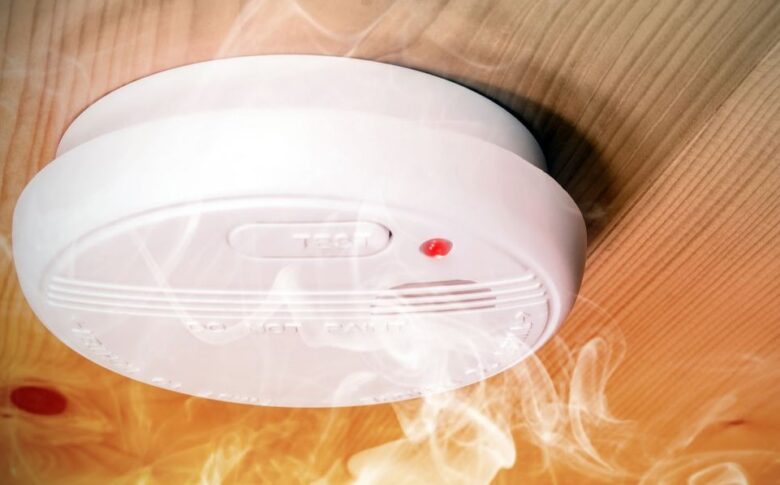
Finally, regularly test all smoke alarms in your home to make sure they are in good working order. Should a fire inadvertently ignite in the kitchen, a working smoke alarm could mean the difference between getting out alive or being overcome by smoke.
Also, it is a very good idea to have a smoke detector installed in or near the kitchen. Knowing that the majority of residential structure fires start in the kitchen, not having a smoke alarm installed nearby is tempting fate. The standard rule of thumb is one near or in the kitchen and another in or near each bedroom.
In the event you do experience a kitchen fire, use common sense. Do your best to put out it by smothering the flames as described earlier in this post. But do not spend five minutes working at it. Once a structure fire gets going, it can overwhelm very quickly.
If you cannot control the kitchen fire within the first minute or two, your chances of getting it under control are slim to none. It is time to leave the home and close the door behind you. Obviously, you will tell other occupants to get out as well. Then call 911 and let the fire department do what they do.
The typical American kitchen is a place of delicious food and fantastic memories. But it can also be an unsafe place. Do yourself and your family a favor by being cautious in the kitchen. Do everything you can to avoid kitchen fires.

